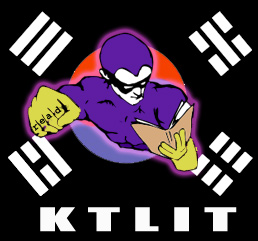An interesting transcript of an interview with Haun Saussy (Professor of Comparative Literature at the University of Chicago) which took places at the Asia Institute Seminar at the conclusion of December 2011. This is from Emanuel Pastreich‘s blog Korea: Circles and Squares, which became immediately lovable to me when I read Pastreich’s About page which says about the author, “He runs a bog known as “Korea: Circles and Squares.” Now THAT is either a bit of completely knowing yourself^^ or an amusing typo.
In any case, the piece begins with a rather philosophical bit of discussion about awareness of the ‘other,’ world-history, philosophy and world-literature. But about two-thirds of the way through they get to issues of Korean literature in translation.
This is, unfortunately, in response to the cliched Korean question “Do you think we are getting near a time when a Korean can win the Nobel Peace Prize? ” (which you can now search for on the page and skip the fluff^^). It interests me that this discussion only mentions one work of Korean literature, and that work not translated; Nor is there any mention of Shin Kyung-sook’s Please Look After Mom, or any of the other recently successful translations.
Here is an elided version of their answer to the Nobel Prize question:
Haun Saussy:
I don’t really know much about the procedure whereby the Nobel Committee decides on its awards. … If a really convincing translation of poetry or fiction into English or Swedish has been done, that seems to increase a writer’s chances.
Emanuel Pastreich:
This question of what internationalization of Korean literature means is critical. … the commodification of literature, scholarship, education, deserves attention.
Haun Saussy:
The international reach of Korean writers has been growing. But it depends on translators and publishers who are willing to make some sacrifices: they must put in a lot of effort and capital in order to create a market that may not grow very fast. In France, for example, there have been two or three publishers who consistently produce fine, readable translations of modern Korean authors, usually novelists. By “consistently,” I mean there are at least two or three titles every year. That keeps something new always in front of the French readers’ eyes, and keeps the image of modern Korean literature from being reduced to one figure …..
Emanuel Pastreich:
Yes, the quality of the translation is critical, but how you get to a high quality translation is part of the problem. We have extremely sophisticated Korean novels like Chili san (Mount Chili) by Byungju Lee. The work completely unknown outside of Korea, let alone being translated into English.
Sadly, most American intellectuals still see Korea through the lens of MASH. Intellectuals in the United States are not drawn into Korean literature early on, I fear.
Haun Saussy:
…. In the best case, readers might “know” Korea through the work of Teresa Cha, Chang-rae Lee or Myung-mi Kim, perhaps Younghill Kang for the older generation. (Note: The point Saussy is making here is that these folks write in English)
Emanuel Pastreich:
We are seeing such interest in Korea here and there, … oddly, although Korea is the hottest country in the world these days in terms of culture, Americans are not that drawn to it.
Haun Saussy:
Discusses the relative cheapness of books versus the effort required to find and read them.
Emanuel Pastreich:…
But let us go back to Korea and how it is perceived. At the University of Chicago, in the Department of Comparative Literature, for example, if you say we have to include some works of the Korean tradition in the World literature program, what would be the response? Probably not a big problem. But then what if you said we need as many teachers of Korean literature as French literature? What would the response be then?
And to top it off, what if we went to the Department of Classics and said, the department must offer courses in Chinese, Korean and Indian classics as well?
the whole thing is worth a look, so if you missed the first link in this post, just click here...



